When you get a CNC router, you may daydream about creating hundreds of pieces exactly the way you envision. But upon setting up the machine and feeding plans to your computer, you might be disappointed with the results. If the machine hasn’t routed properly, you might wonder if the problem is with your specific device or CNC routers in general.
A CNC router is accurate to the point of having only a 0.01-millimeter margin of error. That means an average CNC router might be off by one-hundredth of a millimeter, ten times smaller than the difference visible to the human eye. In other words, the human eye cannot see CNC routing errors.
If you have seen routing inaccuracy, you should assume it is the result of human error or due to a calibration error in the CNC as computer-driven devices are otherwise superior in precision to humans. In this article, we will delve deeper into the different types of CNCs and their potential for accuracy. You will also discover different reasons your CNC might not be accurate. But first, we must look at the relationship between precision and computer-driven routing.
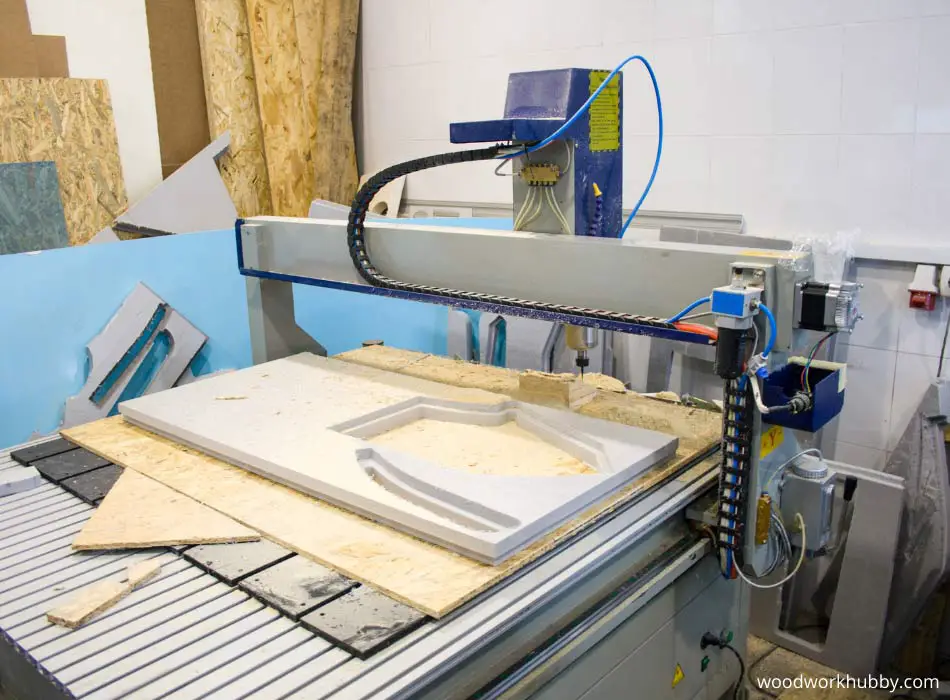
Are CNC machines less accurate?
There are many myths in woodworking, and almost everyone is driven by a long-abandoned ulterior motive. When machining was introduced, builders and workmen were afraid of being redundant.
As a result, most woodworkers decided to stick with an easier-to-buy story: machines are less accurate. This used to be true when unmanned machines were first introduced to the space. However, as the industry has advanced, machines have become a lot more accurate.
A CNC machine could be less accurate than a master woodworker if the machine is made at home. Most professionally-designed CNC routers can route with precision ten times higher than that of advanced woodworking professionals. This makes CNC machines more accurate than most hand-routers today.
The accuracy, however, varies, and for many CNCs, the myth holds some truth: they are indeed less accurate. But compared to whom? CNCs can be less accurate than master woodworkers who have decades of routing experience.
Compared to a novice or a semi-professional woodworker, a CNC machine can be far more accurate. Factory CNCs that have an output of hundred pieces per day cannot afford to be inaccurate and are among the most precise routing devices.
In my experience, a CNC machine is
only as accurate as the person setting it up!
Precision is also measured intolerance. An amateur woodworker has a tolerance of +/- 0.1 mm, which means that he might be off by 0.1 millimeters in any direction. Compared to that, the average routing tolerance of a CNC device is +/- 0.01 mm, ten times more accurate than a fresh woodworker. In other words, if you started working with DIY projects within the last year, the odds are that a CNC device is more accurate than you. That said, not all CNCs have a +/- 0.01 mm tolerance.
Can you use Dremel Bits in a CNC Router? I fully explain if this is possible.
Why do CNCs come in varying degrees of tolerance? Because of the reasons behind their purchase. Different people buy CNCs for different reasons and depending on their motivation. They are more (or less) tolerant of the lack of precision. To understand this better, let’s look at why people buy CNCs.
Homemade CNCs
These are CNCs made from digital blueprints and open-source software. Previously, these were made for personal use but have recently come to marketplaces like eBay. Such CNCs are sold to amateurs and hence need to be just a little more precise than a novice. As a result, homemade CNCs are the least accurate ones.
Possible solutions:
- Check the arm and axis to locate the source of imprecise routing – Usually, such machines can have a less-than-ideal component quality, which makes routing unstable.
- Look at base stability – The base of a homemade device might not be stable.
- Replace router bits for sturdier options – Some homemade options are built with cheaper bits.
I have found a lot of helpful people within this Facebook group who can help set up your CNC router.
Customized CNC routers
Custom-made CNC routers are made for specific types of projects and, unlike homemade ones, are professionally manufactured. These CNCs have the highest accuracy for small-scale project use and are also the most expensive computer-driven routers. A customized device like this is best for small woodworking shops that make high-ticket items.
Possible solutions:
- Take the router back to the manufacturer – customized solutions come with bespoke customer service.
- Cross-reference material-friendliness with your raw materials – the customized router might not be conducive materials you’re using it with.
Mid-Range CNCs
These devices are, as the name suggests, mid-range. Because they’re smaller and lighter than industrial CNC routers, they are ideal for semi-professionals and have a tolerance that reflects their intended audience. Such devices need to be more accurate than a fresh woodworking professional in order to be worth their price.
Possible solutions:
- Get the CNC checked by a professional – Even if the manufacturer doesn’t offer customer support, these CNCs makeup 80% of the common-use market and have plenty of repair solutions.
- Have a better-experienced friend attempt loading and supervision – If there is human error involved, you will notice the difference.
Industrial CNCs
Large-scale manufacturing machines driven by computers have to be accurate enough to be worth the price of purchase but must also have the level of accuracy that shields the manufacturer from potential liability.
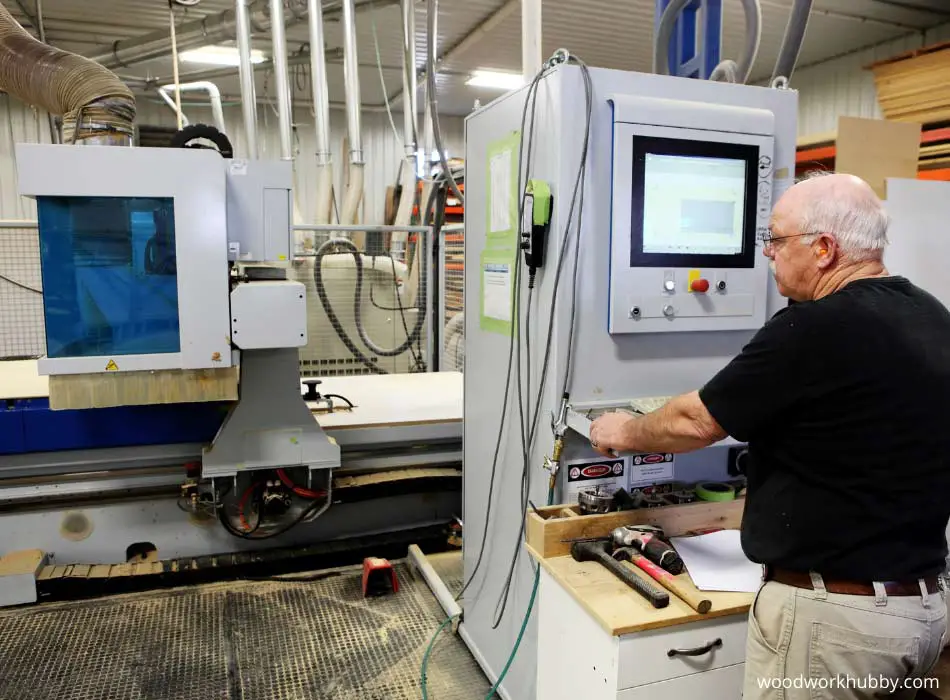
Suppose you make a CNC and sell it to me, and the imprecise routing of your device ruins my stack of hardwood, I might sue you. This means you have to be very sure of your device before selling it to a large-scale manufacturer who will use it with tons of raw material. Needless to say, such CNCs are the most accurate and have multiple fail-safes to keep a batch from getting ruined.
Possible Solutions:
- Contact the manufacturer immediately – You will have priority support as an industry customer.
- Replace the machine supervisor – If the error isn’t in the machine, you should get a better-experienced professional to handle the task.
How Can I Make My CNC Machine More Accurate?
If you have a CNC at home and have seen some routing errors, you may reasonably wonder if it is to be expected with a CNC. It turns out that you cannot actually chalk it up to CNCs as a whole; there’s something in your specific machine that’s causing the errors.
To make your CNC more accurate, you need to look for a pattern in off-plan routing, offset the position of the items fed to the CNC, so the routing discrepancy is neutralized by a change in position. Alternatively, you can upgrade your CNC to reduce the amount of human input.
Consistent off-plan routing
There are two types of imprecise routing results. One is where the machine is unpredictable in how it messes up your project. A +/- 5mm tolerance will have such an impact. But if your machine has a -0.5 mm output every single time, then you can recalibrate your input by +0.5 to get the results you desire.
This requires changing how you handle the machine or feed plans to the software, which isn’t everyone’s cup of tea. It is also possible that your machine doesn’t offset routing in a predictable manner. That’s when you must move to a different solution.
Recalibrate your machine
Looking for loose components and shakiness in the routing arm can reveal areas within the CNC that can be fixed for better results. If your machine has an output that’s off by 0.5mm, it is time to start looking for such looseness.
0.5mm is too small an offset for human error, usually, when people mess up the input or positioning, the result is off by at least 1mm. When the error is unpredictably off (inconsistent in the routing offset) by less than a millimeter, you should start tightening the loose routing arm or fix an axis within the CNC.
I found this video extremely helpful in setting up a CNC.
Reflect on the input
If the degree of error is higher than a millimeter, especially when you have a 3-axis machine, your input might be the culprit. Updating the CNC software, reflecting on the plans, and looking at how you position the wood/raw material can also help. In some cases, using tougher or unsuitable materials during input can affect the output. Ask yourself the following questions.
- Is this my first time using the machine? If you get routing issues in your first attempt, you may just need to position raw material appropriately for accurate results.
- Have I used unsuitable material before? In case you have tried to route tougher materials like metal or have acquired a pre-owned CNC, the error might be because of the needle bit getting blunt or the axis being compromised. Fixing the needle and the arm-tightness can fix this.
- Has the machine ever been accurate? When a CNC that works properly stops being accurate, you can look at what changed around the same time. This can help pinpoint the factor that might have contributed to the lack of accuracy.
What Are 3 Advantages Of A CNC Router?
As mentioned earlier, CNC routers inspired a lot of skepticism when they were initially introduced to the market. However, as time has passed, woodworkers have adopted the machine because of its key advantages.
The 3 advantages of a CNC router are its increase in precision, reduction of operating costs, and ease of repetition. These three advantages, alongside CNC routers’ ability to improve workshop safety, make them a must-have for most medium and large-scale woodworking businesses.
You can easily import plans created by others to a CNC. I get my plans here from WWGOA.
Increase in precision
As covered in the types of CNC section above, each kind of machine-driven router is more accurate than its human counterpart. That’s because a CNC takes its feedback directly from a computer. The less human input it requires, the less likely it is to incur human error.
Placement and axis maintenance are the two areas where human input is still required, and they’re often responsible for imprecise results. In the future, we might have CNC routers that do not require any human intervention.
Reduction of costs
More woodworking projects require more hands, which drives up the manpower costs. That much is obvious but what isn’t evident is that with more people, there’s a higher chance of ruined projects and returns.
When you scale from one worker to two hundred, you might not hire masters of the highest caliber; that would be too expensive. Scaling requires hiring intermediate professionals, which opens up room for human error. Etching, engraving, and routing errors can rarely be reversed, so the raw material goes to waste.
The chances of this happening are lower with CNCs, as computers can be more precise in driving the routing arm. Consequently, you have lower manpower costs and a reduced risk of wasting money on raw material rendered unusable by human error.
Ease of repetition
Repeating the hits is what most businesses need when it comes to long-term success. If a project becomes popular and is requested repeatedly, you want to be able to churn out more pieces with the same level of accuracy and functionality.
See my full article on how long CNC router bits last.
Even if you hire a master or are a master yourself, repeated attempts will result in errors. This can be frustrating and even demoralizing for professionals.
A CNC is more than happy to do the same task over and over. In fact, it is better at repetition than anything else. That said, it is crucial to make the first iteration with a CNC because the last thing you want is for people to get invested in your handmade item and get a machine-routed version upon making a purchase.
CNCs are great at repeating what they have previously done but aren’t the best at mimicking what a master has done by hand.
Are CNC Machines Safe To Use?
If you’re divided between getting a CNC router and continuing hand-routing, you might be making a list of pros and cons. Except for the personalized touch and rarity that comes with purist handiwork, everything else is in favor of CNCs, including safety scores.
CNC machines are safe to use as they reduce human contact with the routing process. As a result, workers are not at a high risk of running into a spinning metal bit. That said, cheaply made amateur CNCs might have loose parts that can fly off the machine and cause an injury.
Therefore, you must wear safety goggles when operating a CNC. The rest of the safety gear isn’t mandatory, though it helps. While no heavy machine work is 100% safe, CNCs are much safer than their handheld equivalent.
Final Thoughts – How Accurate Is A CNC Router?
CNC routers are much more accurate than humans and are off by such a tiny margin that the human eye cannot even detect the difference. In other words, any routing that beautifies a product visually can be done with a CNC routing device at a lower cost, reduced risk, and high repeatability with a CNC.
-
What Is Cedar Wood Used For? (Why I Stopped Using It On Some Projects)

Cedar is one of my favorite wood types because I am tasked with perpetually protecting some of my passion projects. It is one of the most resilient woods out there, and I often find myself wishing that all woods were like Cedar because I cannot really use it for all projects. Cedar wood is used…
-
12 Beginner Wood Carving Projects Anyone Can Carve
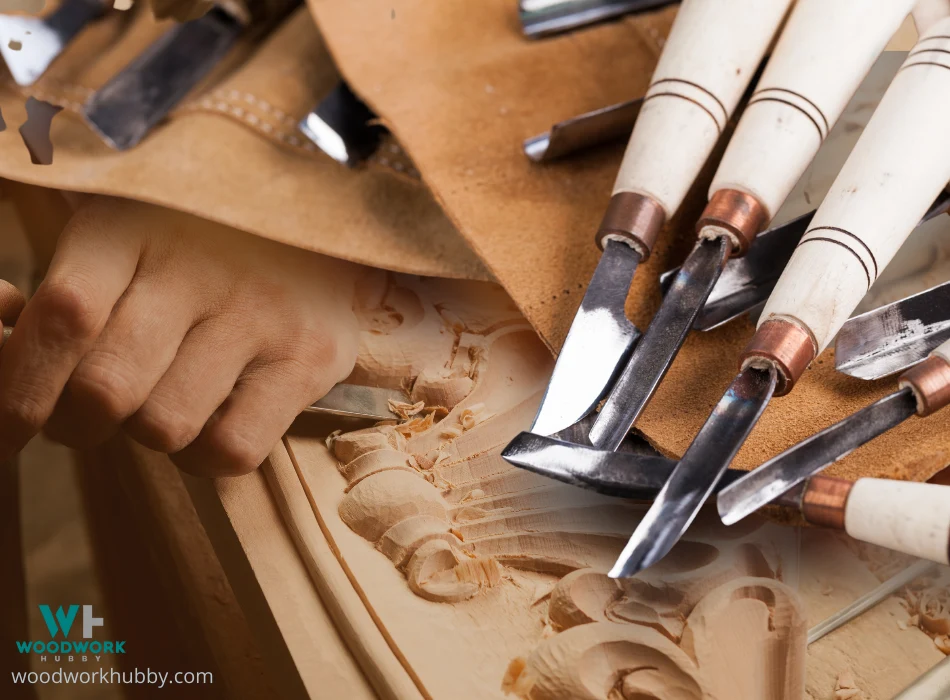
Beginner Wood Carving As a woodworker, I believe woodcarving is one of the simplest forms of woodwork anyone could get involved in. If you start out with the most basic projects first, you can quickly develop the skills and the enjoyment to continue the hobby. I find I get a great sense of achievement from…
-
9 Essential Tips For Screwing Into MDF
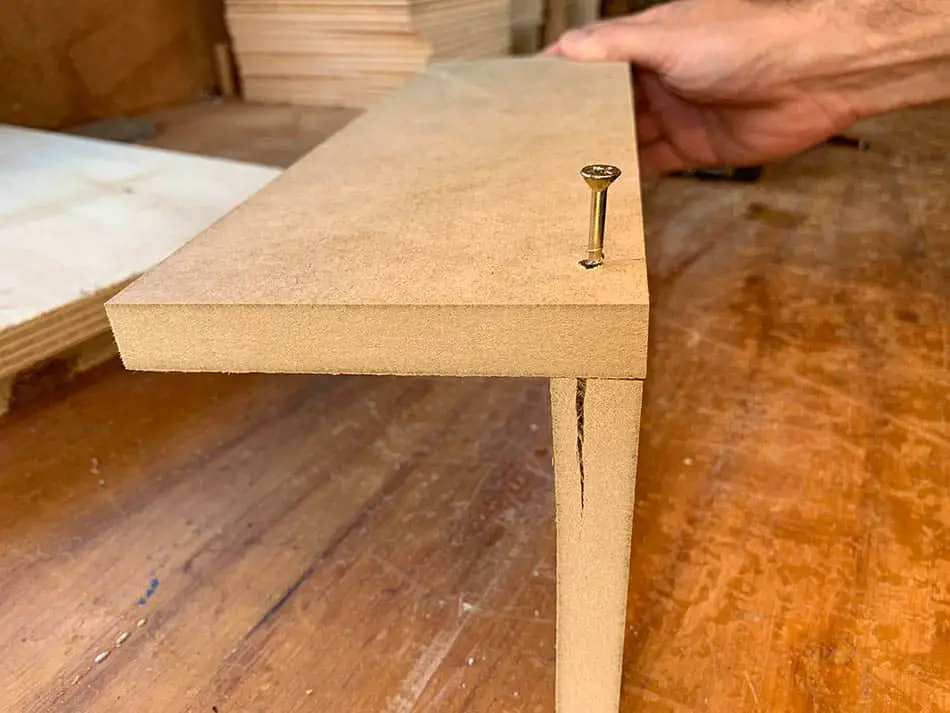
MDF seems to be the one thing that scares most people whenever they need to screw into its edge. I have been a cabinetmaker for the last 20 years and screwing MDF together is something we did every day.All of the apprentices would be always asking how to screw into the edges of MDF without…
-
Maximizing Savings with Bulk Purchase of Wooden Cutting Boards for Your Restaurant

Running a successful restaurant business requires a delicate balance between offering top-notch culinary experiences and managing operational costs. One often overlooked but significant way to save money is by purchasing wooden cutting boards in bulk for your staff. These humble yet essential tools are the unsung heroes of any kitchen, and opting for cost-effective options…
-
Top 5 Best Portable Table Saw For Fine Woodworking

Are you struggling to find the perfect portable table saw for your fine woodworking projects? I know exactly how daunting that can be, having faced the same hurdle once upon a time. After many years of working as a contractor, I have used many table saws and so I decided to identify the best portable…
-
How To Remove Sticky Residue From Wood Table Top (It Works)

I totally get it. That unsightly sticky residue on your beautiful wooden table top just isn’t fun, is it? But how to remove sticky residue from wood table top without causing damage? After much research and plenty of experiments — some successful, others not so much — I’ve compiled quite a variety of methods to…

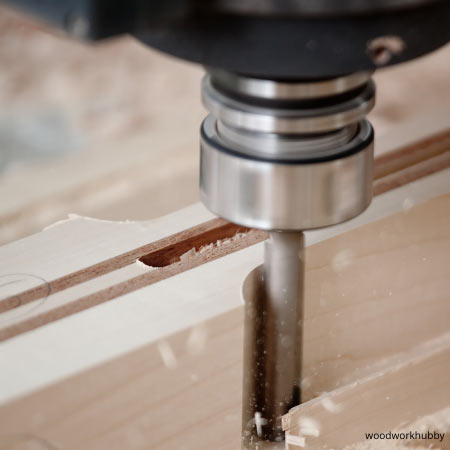
8 responses to “How Accurate Is a CNC Router? Better Than You Think”
[…] allows you to make a more accurate determination (based on the age of a machine) whether it will be worth buying it. You do not want […]
[…] saws are mainly used as accurate angle cutters, but they can also make straight cuts. They work if you have only a few larger pieces […]
[…] best bet is to get ahold of someone with information on the building’s design who can give you accurate information. The majority of my examples in this article will involve flooring because that is most […]
[…] routers are good but are CNC routers accurate? Read my full […]
[…] always measure the thickness and divide that by 2. Mark that measurement with a pencil to ensure accurate and neat […]
[…] to use. It is easy to operate, and with the various fences and jigs available, it is easy to get accurate and clean […]
[…] Firstly, make sure you are marking your wood accurately, using a reliable measure and a straight-edged tool, a set square if necessary, etc. Make sure your pencil is sharp and take the time to double-check all measurements before you start cutting. This will minimize the risk of errors and ensure your guides are accurate. […]
[…] you know how accurate is a CNC? See my full article explaining […]